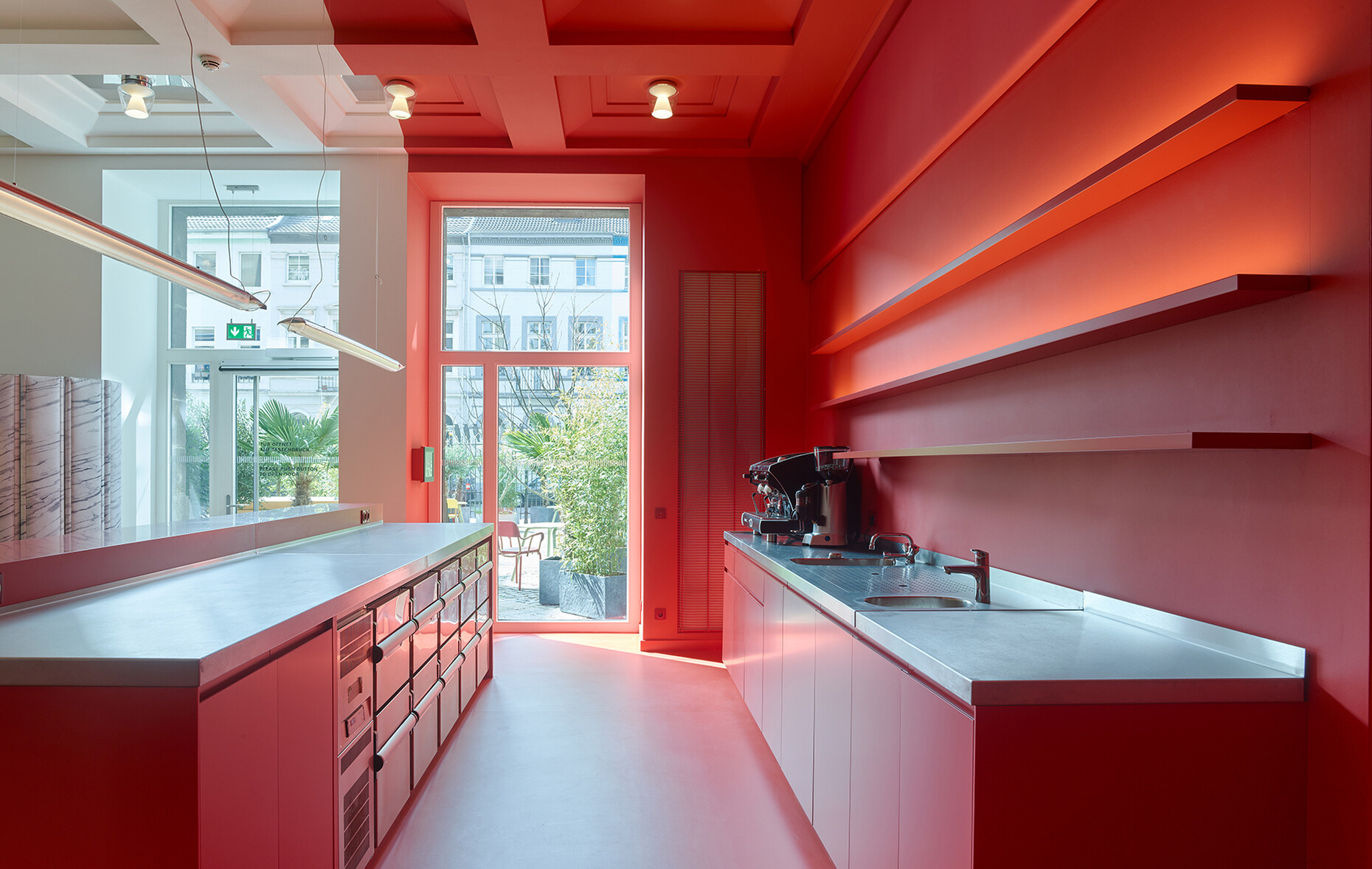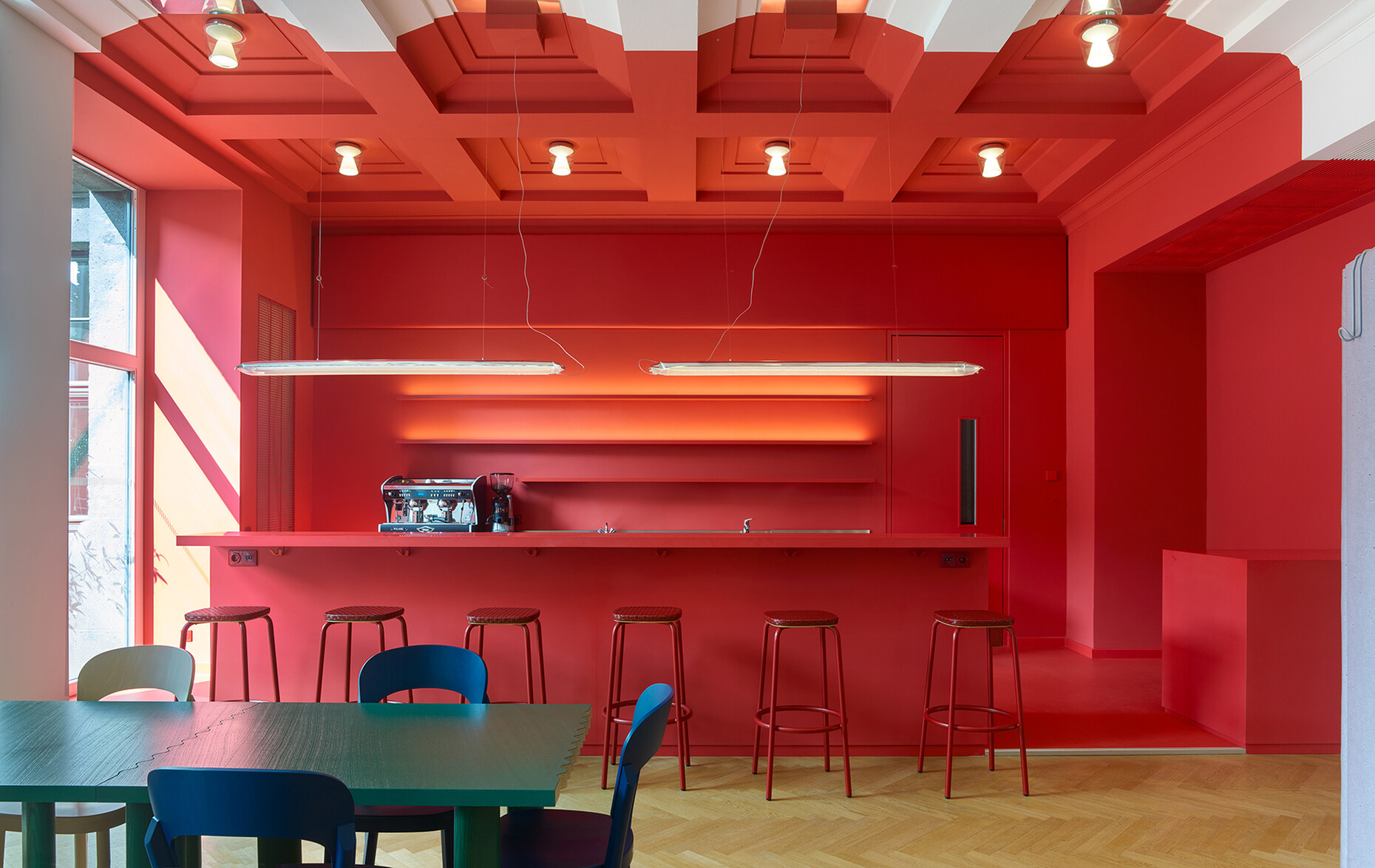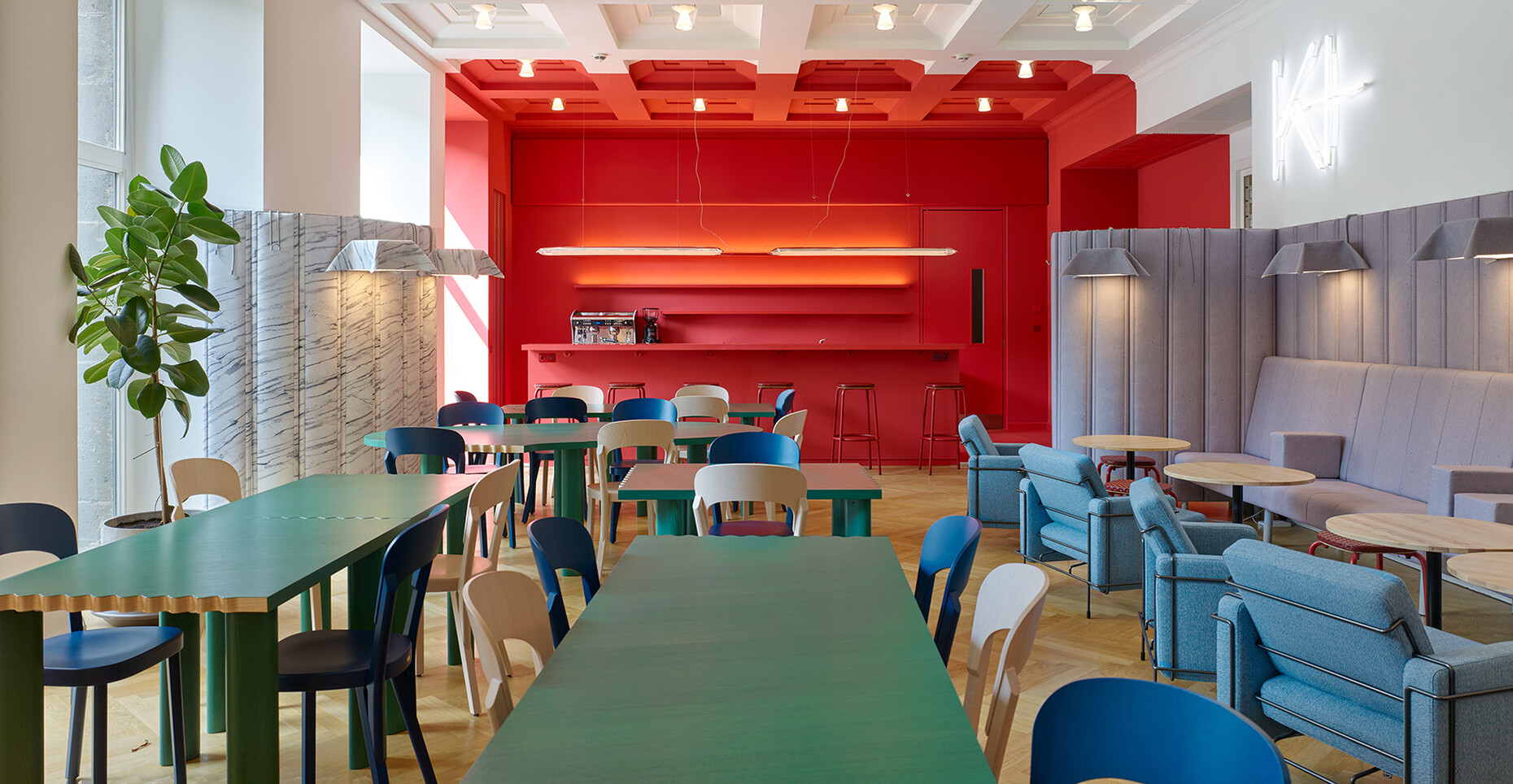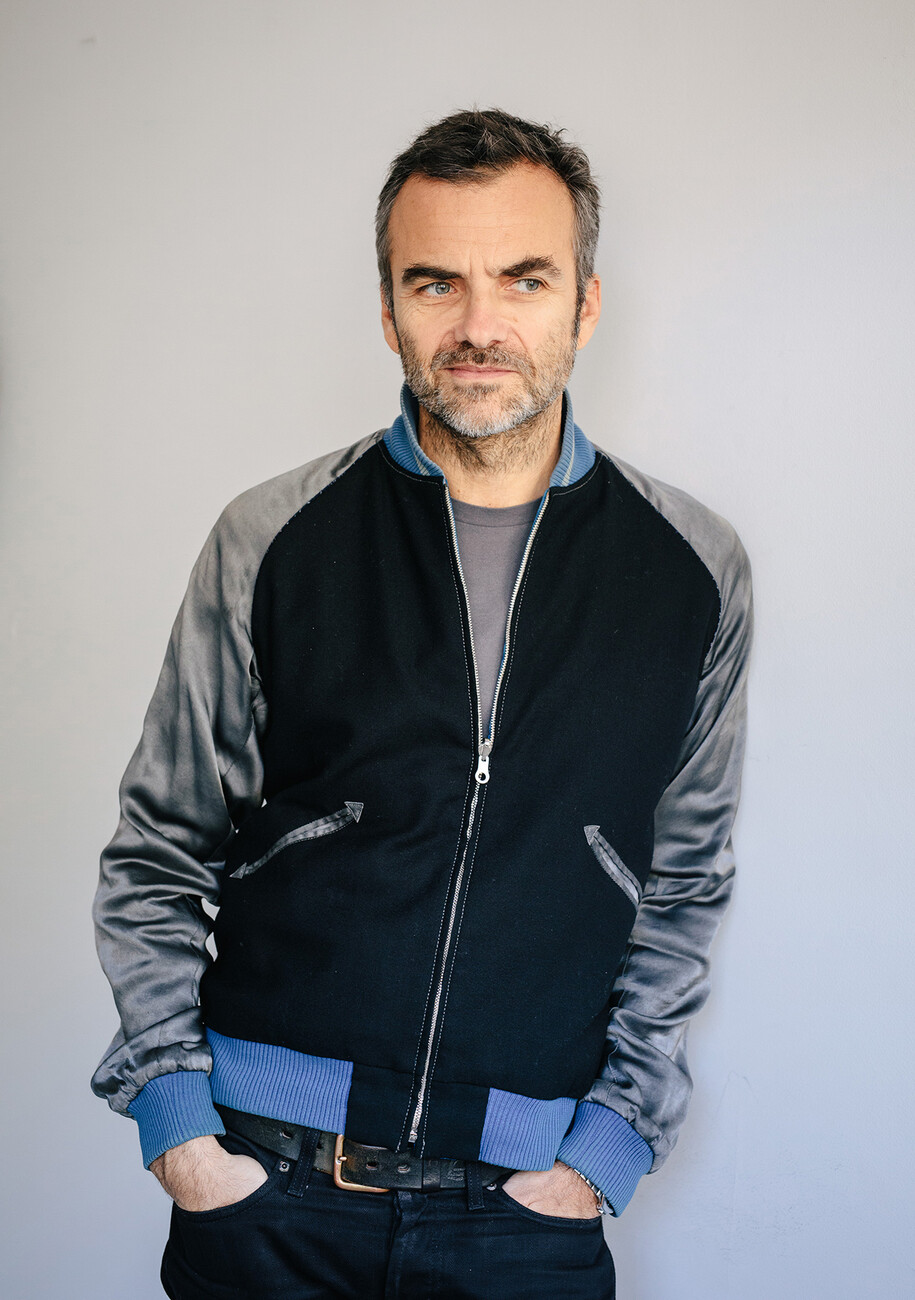More than a café
The main building of the Kunstmuseen museum complex in Krefeld was founded in 1897 as the Kaiser Wilhelm Museum in the spirit of the then Reform movement – a philosophy that was to continue in the German Werkbund and a vision that lives on to this day: Ever since as early as 2018, creatives from various disciplines have been invited to engage with the collection, museum history, and architecture on site and to find new approaches as part of the so-called Collection Satellites. With Collection Satellite #7, designer Robert Stadler has thus not only created a multifunctional space for coffee, communication, conferences, cinema, and more, but also designed an ongoing exhibition that packages the museum’s values in a contemporary and tangible gesamtkunstwerk.
The K+ Café at the KWM functions simultaneously as a site-specific design installation and multifunctional space – entirely in the spirit of “builder” Robert Stadler, who has already conceived multiple exhibitions at renowned venues such as Galerie Poirel in Nancy, the MUDAM Luxemburg, Noguchi Museum in New York, Kunsthalle im Lipsiusbau in Dresden, and at La Pelota during Milan Design Week in 2018. According to Stadler’s approach, an exhibition, like an interior, can pose a challenge at both the aesthetic and content level when it comes to involving the visitor as an active part of the project. In this regard, the designer has succeeded in casting a new, surreal look at the history and identity of the Kunstmuseen Krefeld and the textile tradition.
When Katia Baudin called Stadler, the museum director already had a briefing to hand which, in Stadler’s words, was “as precise as it was ambitious”. At the same time, the Austrian was no stranger to the combination of design and hospitality, having already designed an extremely successful chain of cafes in Paris for Gilbert and Thierry Costes: “After my first visit to the space for the future concept, it was immediately clear to me that colors would play a major role in this project.” Overarching all this from the outset was the museum director’s desire to create not a “normal” museum café, but rather a gesamtkunstwerk that would nevertheless meet all the functional requirements.
With its direct connection to the Kaiser Wilhelm Museum, the site itself played a fundamental role for Stadler in the course of the overall creative process: “Both the back-story of the historical museum and of Krefeld as a location, where the spirit of Mies van der Rohe is everywhere, were seminal elements for the project. I have tried to play around with these references – for example, with the use of trompe l’oeil effects.” Hence the deceptively real-looking concrete and marble elements are, in reality, digital prints on upholstered structures that further mislead viewers, as the surfaces feel not hard and cold, but rather soft and warm. But the screen is also exemplary of the close cooperation with local businesses. “Five different craftspeople and companies worked side by side to create these elements: Kesper Druckwalzen produced high-resolution photos and their repetition for the marble and concrete pattern, while the load-bearing structure, complete with acoustic hard foam, was produced by m.u.p.-creative works, the fabric was printed by Verseidag, and the upholstery supplied by Brunner.” Luminaires made with the same fabric were also produced by STG light in cooperation with Brunner.
For Stadler, the special nature of the project is ultimately in the briefing, which set several – and in some cases seemingly incompatible – requirements: “It was a huge challenge which I found extremely interesting, as for me it was, in a way, a guarantee that the café would have to become something special.” First, the designer had to get to grips with the acoustics and to solve the problem of how to convert the café at any time into a conference room and a bar. “The widely varying visitor frequency – from a flood during events to a trickle on certain other days – was also an issue for me: Ultimately the café has to be able to offer a pleasant atmosphere in all situations.” On top of this, an austere and imposingly designed courtyard had to be brought to life in line with the concept.
The solution? The use of textiles and other noise-dampening materials enabled him to vastly improve the acoustics. The screens, which appear so playful and light in this sense, are in reality highly technical objects, which at the same time make it possible to create different zones and places of retreat, without detracting from the aesthetic impression of the space through movable walls or the like. “In the center of the courtyard, we designed a multifunctional platform that serves both as seating and as a stage for performances and other events,” says Stadler, explaining the idea behind the design of the outside area.
What makes a visit to the K+ Café at KWM Krefeld so worthwhile? “The project was truly not an easy birth. In fact, in the beginning it was often met with perplexity, even aversion. But the fact that eventually all the people who were originally skeptical now consider the café a success makes it all the more satisfying,” says Stadler. “The combination of objects and colors, which seem strange to some visitors, probably call for the physical experience and not merely a walk in the metaverse.”




















